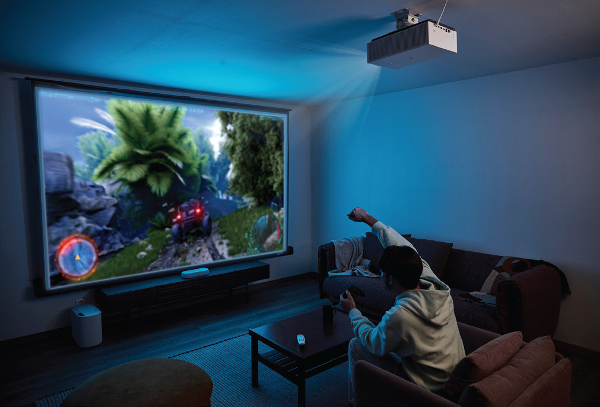Introduction to Projector Technology
Imagine transforming any wall into a canvas of vibrant images and ideas. Projector technology has made this possible, providing dynamic visual communication like never before. From captivating presentations to immersive home theater experiences, projectors have evolved far beyond their traditional roles. As we step into the future, the benefits of using projector technology are set to redefine how we interact with information and entertainment.
The landscape is changing rapidly. Whether it’s in classrooms, conference rooms, or living rooms, projectors are becoming essential tools that enhance engagement and foster creativity. Join us as we explore the rich history of projectors and uncover the advantages they bring across various industries. The journey through projector technology is just beginning, and its potential seems limitless.
History and Evolution of Projectors
The journey of projector technology began in the 17th century with the invention of the magic lantern. This early device used a light source and painted glass slides to create moving images, captivating audiences with its novelty.
As time progressed, advancements took shape. The late 19th century introduced film projectors, which transformed entertainment by bringing motion pictures to life on big screens. These machines relied on reels and a flickering light mechanism that quickly became synonymous with cinema.
Fast forward to the digital age, where projectors underwent drastic changes. DLP and LCD technologies emerged, making devices smaller while enhancing image clarity and color vibrancy.
Today’s laser projectors represent cutting-edge innovation. They offer longer lifespans and energy efficiency without sacrificing performance quality. Each evolution has paved the way for more immersive experiences across various platforms—whether at home or in professional settings.
Advantages of Using a Projector
Projectors offer a versatile way to display visuals, making them ideal for various settings. Their ability to project large images allows for better visibility in group environments. This proves invaluable during presentations or movie nights.
Another advantage is portability. Many modern projectors are lightweight and easy to transport, enabling users to set up their equipment anywhere—from conference rooms to outdoor spaces.
The flexibility in screen size adds another layer of convenience. Users can adjust the projection based on available space, ensuring optimal viewing experiences regardless of the venue.
Cost-effectiveness also stands out when comparing projectors with traditional large screens. Projecting onto a wall or screen often requires less investment than multiple monitors for an immersive experience.
Advancements in projector technology have led to improved image quality and brightness levels, enhancing clarity even in well-lit areas.
Applications and Uses of Projectors in Different Industries
Projectors have found a place in various industries, revolutionizing the way we present information.
In healthcare, they assist in surgical planning and training. Surgeons can project 3D images of anatomy directly onto patients, enhancing precision during operations.
The entertainment industry relies heavily on projectors for immersive experiences. From large-scale concerts to movie screenings, these devices create vibrant visuals that captivate audiences.
In corporate settings, they play a vital role in meetings and presentations. Projectors facilitate clearer communication by displaying data and graphics effectively, ensuring everyone stays engaged.
Educational institutions benefit significantly as well. Classrooms equipped with projectors foster interactive learning environments where teachers can display videos or animations to illustrate complex concepts visually.
Even retail spaces are leveraging projection technology for advertising. Dynamic displays attract customers’ attention and enhance brand visibility through creative visual storytelling.
Each application showcases the versatility of projector technology across sectors.
Impact of Projector Technology on Education
Projector technology has transformed the educational landscape dramatically. Classrooms are now vibrant spaces where learning comes to life through dynamic visuals.
Teachers can present complex information clearly, using videos and interactive slideshows. This helps students grasp challenging concepts more effectively. Engaging presentations spark curiosity, encouraging participation and collaboration among classmates.
Moreover, projectors facilitate remote learning environments. Students can attend classes from anywhere while still benefiting from visual aids that enhance understanding.
The versatility of projectors also allows for diverse teaching methods—lectures become multimedia experiences rather than one-dimensional talks. Interactive lessons foster a deeper connection with the material, making education more enjoyable.
As schools embrace advancements in projector technology, they prepare students for a future that values innovation and creativity in learning processes.
Future Developments and Innovations in Projector Technology
The future of projector technology is vibrant and filled with potential. Innovations are on the horizon, promising enhanced clarity and interactivity.
One exciting development is laser projection. This technique offers brighter images and longer lifespans than traditional lamps. Users can expect stunning visuals even in well-lit environments.
Another area to watch is 3D projection mapping. This creative application transforms ordinary surfaces into dynamic displays. Artists and advertisers alike will leverage this technology for immersive experiences that captivate audiences.
Portable projectors are also gaining traction, making it easier than ever to share content on the go. Compact designs will empower professionals and students to present ideas anywhere, at any time.
As augmented reality evolves, we may see projectors integrating seamlessly with AR devices. This could revolutionize how we interact with digital information in our daily lives.
The advancements promise a new era where projecting becomes an integral part of communication and storytelling.
Conclusion: The Endless Possibilities of Projector Technology
The landscape of projector technology continues to evolve, bringing new possibilities that can transform how we communicate and share information. With advancements in resolution, portability, and interactivity, projectors are becoming more accessible and versatile than ever before.
Imagine classrooms where lessons come alive through interactive projections or boardrooms where ideas can be visually shared in real-time. The potential applications span industries—from healthcare presentations that require detailed visuals to entertainment experiences that immerse audiences like never before.
As we look ahead, innovations such as 3D projection mapping and enhanced connectivity options will further broaden the horizons of projector use. These developments promise not just improved quality but also richer engagement across various platforms.
Projector technology is not merely a tool; it’s an enabler of creativity, collaboration, and communication. As it integrates with other emerging technologies like augmented reality (AR) and virtual reality (VR), the future holds endless possibilities for harnessing this dynamic medium in ways we’ve yet to fully explore.









